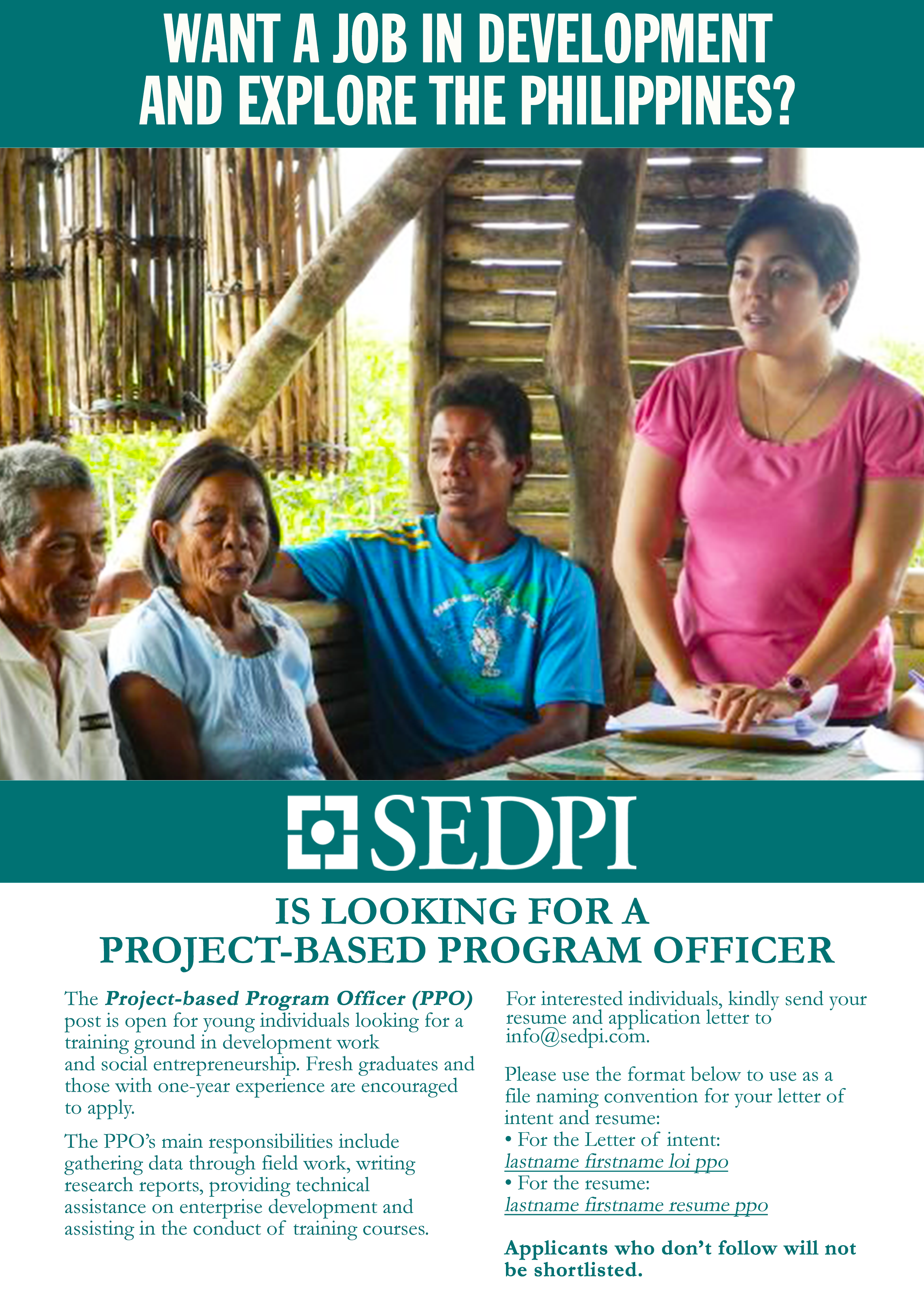Category: Social Entrepreneurship
-

Job Opening | Project-Based Program Officer
Do you want a job in development and explore the Philippines? Are you interested in development work in microfinance, social entrepreneurship, and financial education? SEDPI is currently looking for a Project-based Program Officer. SEDPI is the premiere capacity building institution providing training, research and consulting services in the areas of microfinance, social entrepreneurship and financial literacy in…
-
SDFI’s Net Income Soars by 46% in 2015
SEDPI Development Finance, Inc.’s (SDFI) net income jumped by 46% from PhP3.44 million in 2014 to PhP5.03 million in 2015. This is the highest net income of SDFI on record. The surge in net income is on the back of modest asset growth of only 9% that is an indicator of a more efficient use…
-
CCC Launches Community of Practice
By: Miguel Roberto Parungo In an effort to create more relevant discussions on the issues of climate change, the Climate Change Commission (CCC) launched the Climate Change Community of Practice (ccc-cop.org) last December 18, 2015 at Novotel in Araneta Center, Cubao, Quezon City. The Community of Practice (CoP) serves as a platform in storing and…
-
SDFI Posts 24% Growth in 2014
SEDPI Development Finance, Inc. (SDFI) posted an impressive 24% growth in its total assets in 2014. This is twice the growth of the banking industry that grew by 12% in the same period. Increase in loan portfolio drove SDFI’s growth that grew from PhP160 million to PhP211 million posting a growth rate of…
-
PricewaterhouseCoopers Awards Special Recognition to SEDPI
SEDPI Development Finance, Inc. (SDFI), the financing arm of SEDPI Group of Social Enterprises, received special recognition from the First Development Social Enterprise Awards (DSEA) held on March 4, 2015 at the Kalayaan Hall, Club Filipino in the City of San Juan. DSEA aims to recognize organizations that are committed…
-
Dahil sa LSE, Tagumpay! Tumigil na ang abuso sa padala
The LSE Program has helped transform the lives of Overseas Filipinos. Many of our graduates have overcome the burden of debt, saved enough emergency savings and availed of adequate insurance coverage. Aside from these, the participants were also taught how to practice leadership and come up with a social enterprise plan. The program is implemented under…
-
“Dahil sa LSE, Nanumbalik ang Tiwala ko Sa Sarili”
The LSE Program has helped transform the lives of Overseas Filipinos. Many of our graduates have overcome the burden of debt, saved enough emergency savings and availed of adequate insurance coverage. Aside from these, the participants were also taught how to practice leadership and come up with a social enterprise plan. The program is implemented under…
-
“Dahil sa LSE, Mas Naayos ang Plano Naming Pamilya”
The LSE Program has helped transform the lives of Overseas Filipinos. Many of our graduates have overcome the burden of debt, saved enough emergency savings and availed of adequate insurance coverage. Aside from these, the participants were also taught how to practice leadership and come up with a social enterprise plan. The program is implemented under…
-
“Dahil sa LSE, Naka-ahon Ako sa Utang”
The LSE Program has helped transform the lives of Overseas Filipinos. Many of our graduates have overcome the burden of debt, saved enough emergency savings and availed of adequate insurance coverage. Aside from these, the participants were also taught how to practice leadership and come up with a social enterprise plan. The program is implemented under…